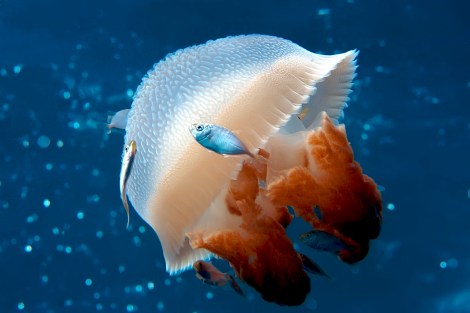This blog post was written by Alecia Jurado, former Great Nature Project intern. We’re sharing National Geographic staff and friends’ stories about nature to celebrate the Great Nature Project. To share your own nature photos of plants and animals with National Geographic, visit greatnatureproject.org.
It’s 9:45 PM and I’ve found myself stranded in my room after a certain encounter with an unexpected visitor in my bathroom sink. I’m standing on my bed, tennis shoe in one hand, and a bottle of cleaning spray in the other; ready to pounce at the slightest sight of movement. Who would have thought that a surprise appearance from my dear friend the cockroach could lead to a sleepless night? As I stood there, two thoughts crossed my mind: why the heck did I not own bug spray, and why did this beautiful planet have to be home to creatures as disgusting as cockroaches? Even more important was my third thought: why did these creatures have to make my home their home as well?
I have never been, nor will I ever be, a bug person. I love to be outside as a part of nature, but that doesn’t mean I’m happy to see a dark spot scuttle across my feet as I walk my dog. And I’m certainly not happy to see it scuttle across my bathroom sink right before I’m about to brush my teeth! There’s a reason why I love the ocean so much—I never have to deal with bugs underwater. Or, so I thought.
As I sat trapped on my bed, I decided to do a little research. What creatures are considered the bugs of the ocean? Crustaceans are the closest relative to the insects we find on land today. Crabs, lobsters, and copepods share the same phylum as the spiders, beetles, and cockroaches I so adamantly fear.

Being the ocean nerd that I am, copepods have always been one of my favorite groups of underwater creatures. Though they come in various shapes and sizes, none of them are particularly beautiful. In many ways, they resemble the bugs I find on land and in my bathroom on “lucky” nights like tonight.
But—I happen to know that there’s a lot more to copepods than what meets the eye. Certain species don’t reveal their true beauty until seen in a certain light. By day they appear as clear microscopic cockroaches, but by night, copepods create a magnificent display of bioluminescence—a natural display of light as bright as a shining blue glowstick. When disturbed by a swimming fish or a splashing object, these mini “cockroaches of the sea” light up the dark waters like a fireworks show.

I’ve never had a problem finding beauty and perspective in the ocean, but on land, with regard to bugs, it’s a little trickier. Some people are a step ahead of me. For example, the artist Steven R Kutcher, has discovered the beauty of bugs through art —the bug’s own art, in fact! He prompts different insects to record their footsteps in paint across canvases to create beautiful one-of-a-kind pieces of art. Their footprints create paintings that reveal a delicate balance of nature and art, something only nature itself could create.
I’m nowhere near appreciating the beauty of a cockroach living in my sink, but fortunately there are plenty of people who have found beauty in bugs.. As I look through the photos submitted to the Great Nature Project, there’s not a single page where I don’t find an interesting or artful photo of an insect. This evidence is proof that in a certain light, and with the right perspective, any creature can be beautiful.
This blog post was written by Alecia Jurado former Great Nature Project intern.

